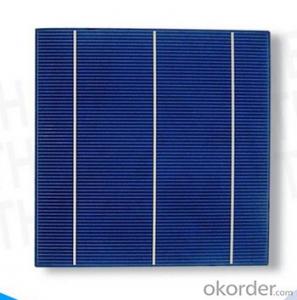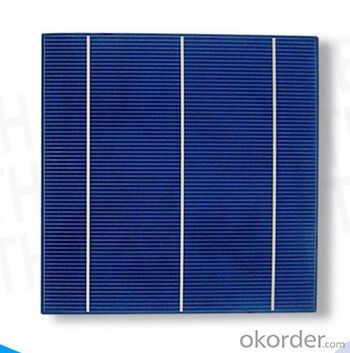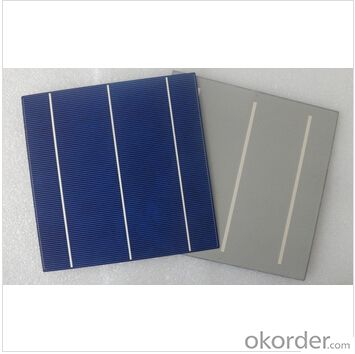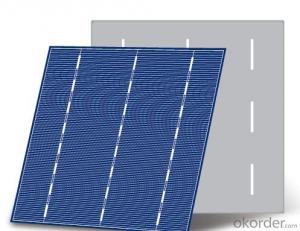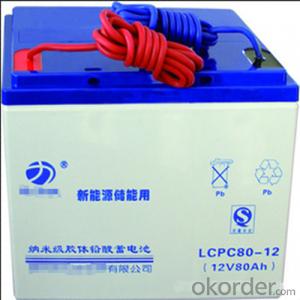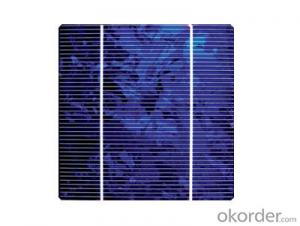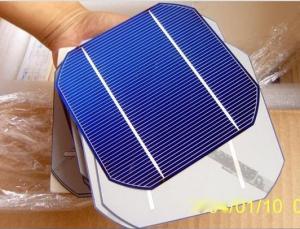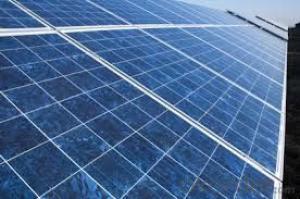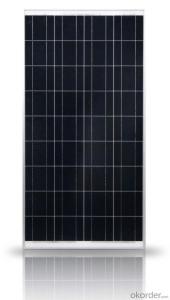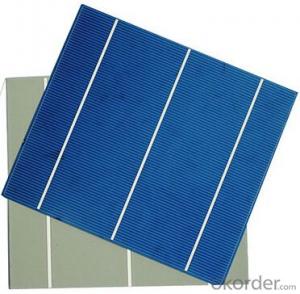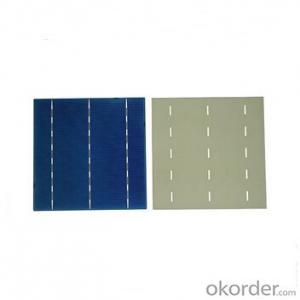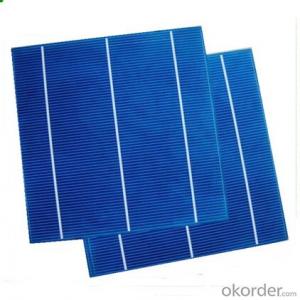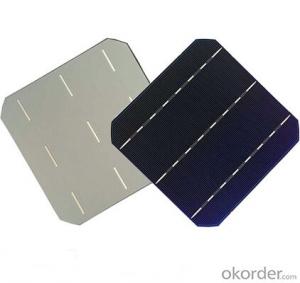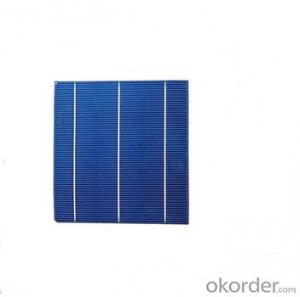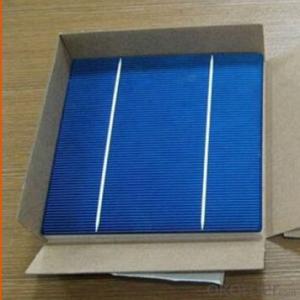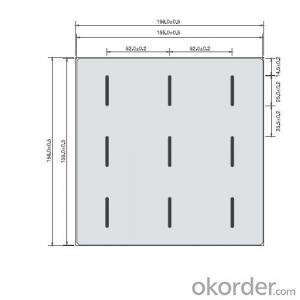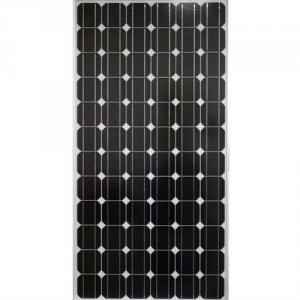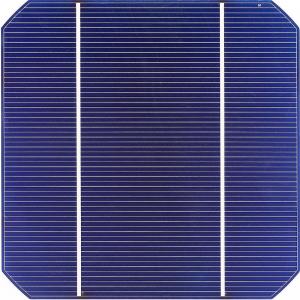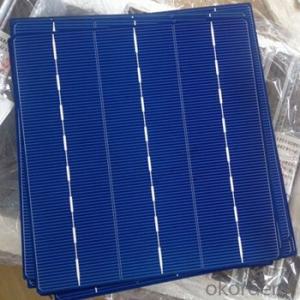High Quality Floating Polycrystalline Solar Cells 17.00-17.19effy
- Loading Port:
- Shanghai
- Payment Terms:
- TT or LC
- Min Order Qty:
- 1000 pc
- Supply Capability:
- 1000000 pc/month
OKorder Service Pledge
OKorder Financial Service
You Might Also Like
Solar Cells:
solar cells, when struck by photons of light from the sun, generates an electrical current which can then be used to power DC or AC electrical loads.
A solar cell is made of silicon. Computer chips are made of this same material. Basically, when light strikes the surface of a solar cell some of it is absorbed into the silicon. This light energy bumps the electrons loose and causes energy to flow
Solar cells is made by solar wafer, it has three categories of solar cell right now, monocrystalline polycrystalline and thin film,These cells are entirely based around the concept of PN junction, which is the critical part of solar module, it is the part that can convert the light energy into electricity, the thickness is from 180um to 200um, with even busbars to conduct electricity, textured cell can decrease diffuse reflection; they are often electrically connected and encapsulated as a module. Photovoltaic modules often have a sheet of glass on the front (sun up) side, allowing light to pass while protecting semiconductor wafers from abrasion and impact due to wind-driven debris, rain, hail, etc. Solar cells are also usually connected in series in modules, creating an additive voltage. Connecting cells in parallel will yield a higher current;With high quality and stable quality. Our Cells can greatly improve the performance of Solar Modules.
Specifications
Efficiency Code | 170 | 168 | 166 | 164 | 162 | 160 | 158 | 156 |
Efficiency Eff(%) | 17.00-17.19 | 16.80-16.99 | 16.60-16.79 | 16.40-16.39 | 16.20-16.39 | 16.00-16.19 | 15.80-15.99 | 15.60-15.79 |
Power Ppm(w) | 4.14-4.19 | 4.09-4.14 | 4.04-4.09 | 3.99-4.04 | 3.94-3.99 | 3.89-3.94 | 3.85-3.89 | 3.80-3.85 |
Max.Power current Ipm(A) | 7.97 | 7.91 | 7.82 | 7.77 | 7.72 | 7.67 | 7.62 | 7.56 |
Min.Power Current Ipm(A) | 7.73 | 7.68 | 7.58 | 7.54 | 7.49 | 7.44 | 7.39 | 7.34 |
Short Circuit Current Isc(A) | 8.45 | 8.40 | 8.34 | 8.30 | 8.25 | 8.21 | 8.15 | 8.10 |
Max Power Voltage Vpm(V) | 0.522 | 0.520 | 0.519 | 0.516 | 0.513 | 0.511 | 0.508 | 0.505 |
Open Circuit Voltage Voc(V) | 0.624 | 0.622 | 0.620 | 0.618 | 0.616 | 0.614 | 0.612 | 0.609 |
Solar Cells Advantage:
• High efficiency and stable performance in photovoltaic conversion.
• Advanced diffusion technique ensuring the homogeneity of energy conversion efficiency of the cell.
• Advanced PECVD film forming, providing a dark blue silicon nitride anti-reflection film of homogenous color and attractive appearance.
• High quality metal paste for back surface and electrode, ensuring good conductivity, high pulling strength and ease of soldering.
• High precision patterning using screen printing, ensuring accurate busbar location for ease with automatic soldering a laser cutting.
Features:
High efficiencies up to 16.4%
Proven long term mechanical stability of silicone
Make of highly purified poly silicone
Three bus bars for reduced series resistance and improved module and cell efficiency
Blue anti-reflecting coating ensures improved light absorption and increased efficiency
Acid texturization offers a uniform appearance and virtually invisible crystal structure
Excellent low light behavior for improved energy yield
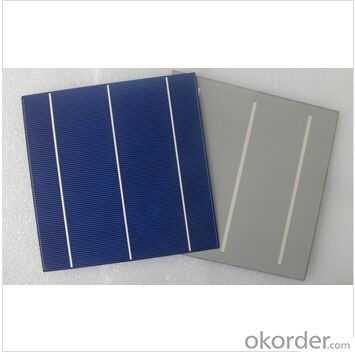
FAQ
We have organized several common questions for our clients,may help you sincerely:
①What price for each watt?
It depends on the efficiency of the solar cell, quantity, delivery date and payment terms.
②How long can we receive the product after purchase?
In the purchase of product within three working days, We will arrange the factory delivery as soon as possible. The pecific time of receiving is related to the state and position of customers.Commonly 7 to 10 working days can be served.
③Can you provide the peripheral products of the solar panels, such as the battery, controller, and inverter? If so, can you tell me how do they match each other?
Yes, we can, we have two companies for solar region, one is CNBM International, the other is CNBM engineering Co.
We can provide you not only the solar module but also the off grid solar system, we can also provide you service with on grid plant.
④What is your warranty of solar cell?
Our product can promise lower than 0.3% open box crack, we support claim after opening the box if it has crackm color difference or sth, the buyer should give pictures immediately, we can not accept the claim after the solar cell has assembled to solar panel.
• Timeliness of delivery
• ⑤How do you pack your products?
We have rich experience on how to pack the solar cell to make sure the safety on shipment, we could use wooden box or pallet as buyer's preference.
How Monocrystalline Cells Are Made
As the name implies this type of solar panel are unique in their use of a single, very pure crystal of silicon. Using a process, similar to making semi-conductors, the silicon dioxide of either quartzite gravel or crushed quartz is placed into an electric arc furnace. Heat is then applied and the result is carbon dioxide and molten silicon. This simple process yields silicon with one percent impurity, useful in many industries but not the solar cell industry, which requires a much higher purity level.
This is accomplished by passing a rod of impure silicon through a heated zone several times in the same direction. This procedure "drags" the impurities toward one end with each pass. At a specific point, the silicon is deemed pure, and the impure end is removed.
Next, a silicon seed crystal is put into a Czochralski growth apparatus, where it is dipped into melted polycrystalline silicon. The traditional way of adding boron, is to introduce a small amount of boron during the Czochralski process. The seed crystal rotates as it is withdrawn, forming a cylindrical ingot of very pure silicon.
Wafers are then sliced out of the ingot, then sealed back to back and placed in a furnace to be heated to slightly below the melting point of silicon (1,410 degrees Celsius) in the presence of phosphorous gas. The phosphorous atoms "burrow" into the silicon, which is more porous because it is close to becoming a liquid. The temperature and time given to the process is carefully controlled to ensure a uniform junction of proper depth.
- Q: How long is the long cycle solar cell life?
- Various solar cells according to its working principle, life is different (1) silicon solar cells Silicon solar cells are divided into three kinds of monocrystalline silicon solar cells, polycrystalline silicon thin film solar cells and amorphous silicon thin film solar cells.
- Q: Can solar cells be used for powering transportation infrastructure?
- Yes, solar cells can be used to power transportation infrastructure. Solar-powered electric vehicles (EVs) have become increasingly popular and accessible. Additionally, solar panels can be installed on charging stations, parking lots, and even along roads to generate electricity for EVs. Solar energy can also be used to power electric trains and trams, reducing their reliance on fossil fuels. Furthermore, solar cells can be employed to power street lights, traffic signals, and other transportation infrastructure, helping to reduce carbon emissions and promote sustainability.
- Q: Can solar cells be used in remote locations?
- Yes, solar cells can be used in remote locations. Since solar cells generate electricity from sunlight, they do not require access to a power grid, making them an ideal solution for remote areas where traditional power sources may not be readily available. Additionally, advancements in solar technology have made it possible to store excess energy in batteries, ensuring a continuous power supply even during periods of low sunlight.
- Q: What are the advantages of monocrystalline silicon and polycrystalline silicon in solar power?
- no mechanical groove in the same area on the efficiency of 16%, using buried gate structure, mechanical groove in the 130 square centimeters of polycrystalline Battery efficiency of 15.8%. (1) monocrystalline silicon solar cells
- Q: Where can I get a competitive price for this solar cell? The 2bb/3bb polycrystalline solar cell panel?
- 2bb/3bb polycrystalline solar cell panel is a conventional solar cell you can basically get anywhere, but mostly it is produced in China.
- Q: What is the role of batteries in solar cell systems?
- The role of batteries in solar cell systems is to store the excess energy generated by the solar panels during the day, so it can be used during periods of low sunlight or at night. This helps ensure a continuous and reliable power supply from solar energy.
- Q: What is the impact of solar cells on reducing electricity bills?
- Solar cells have a significant impact on reducing electricity bills as they generate renewable energy from the sun, which can be used to power homes or businesses. By harnessing solar power, individuals can reduce their reliance on traditional electricity sources, resulting in lower monthly bills. Additionally, excess energy produced by solar cells can be fed back into the grid, earning credits or payments that further offset electricity costs. Overall, solar cells provide a sustainable and cost-effective solution for reducing electricity bills.
- Q: Is it complicated to make a solar cell work well?
- For the professionals, it is not complicated at all.
- Q: What is the role of tracking systems in solar cell installations?
- The role of tracking systems in solar cell installations is to optimize the amount of sunlight that reaches the solar panels throughout the day. These systems continuously monitor the position of the sun and adjust the orientation and tilt of the panels accordingly. By tracking the sun's movement, the panels can capture more sunlight and generate higher energy output, increasing the overall efficiency of the solar cell installation.
- Q: Are there any library or exhibition halls where I can show students at school how the solar cells works?
- Well, it is hard to say when there would be one talking about solar cells.
Send your message to us
High Quality Floating Polycrystalline Solar Cells 17.00-17.19effy
- Loading Port:
- Shanghai
- Payment Terms:
- TT or LC
- Min Order Qty:
- 1000 pc
- Supply Capability:
- 1000000 pc/month
OKorder Service Pledge
OKorder Financial Service
Similar products
Hot products
Hot Searches
Related keywords
